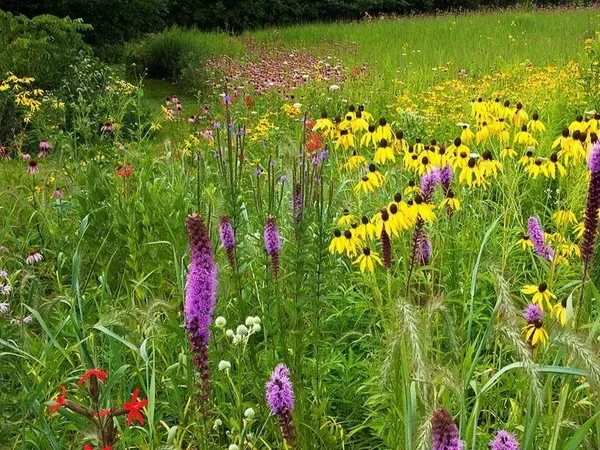6 Benefits of Using Native Plants in Northeast Florida Gardens and Landscapes (Plus Recommended Plants)
Designing landscapes with native plants in Northeast Florida isn’t just a trend—it’s a smart, sustainable choice that benefits homeowners, wildlife, and the environment. From the coastal dunes of Amelia Island to the shady woodlands of Clay County, native species are uniquely adapted to the region’s sandy soils, humid climate, and periodic droughts. Here’s why integrating native plants into your landscape design is a game-changer:
1. Low Maintenance
Native plants thrive in local conditions without heavy inputs. Once established, they typically require less water, fertilizer, and pest control than non-natives—saving you time and money.
2. Drought Tolerance
With Florida’s hot, dry springs and occasional watering restrictions, drought tolerance is crucial. Many native species are naturally equipped to survive long dry spells, making your landscape more resilient.
3. Supports Wildlife
Native plants provide essential food and habitat for pollinators, birds, and butterflies. By planting species like milkweed or beautyberry, you’re contributing to the survival of monarchs, songbirds, and native bees.
4. Protects Ecosystems
Non-native species can become invasive and outcompete native flora. By using natives, you help preserve the region’s biodiversity and protect sensitive natural areas from degradation.
5. Storm Resilience and Erosion Control
Grasses and groundcovers like muhly grass and dune sunflower have strong root systems that stabilize soil and reduce runoff—ideal for sloped yards or coastal properties.
6. Aesthetic Diversity
Native plants offer striking visual variety—from the fluffy plumes of pink muhly grass to the bold color of blanket flower or the bold foliage of dwarf palmetto—giving you beauty with ecological function.
Explore the plant list above to find the perfect mix of species for sunny, shady, or mixed conditions in your garden. By choosing native, you’re investing in a landscape that’s beautiful, resilient, and rooted in place.
Recommended Plant List:
Full Sun
Muhlenbergia capillaris – Pink Muhly Grass
Coreopsis floridana – Florida Tickseed
Gaillardia pulchella – Blanket Flower
Helianthus debilis – Dune Sunflower
Asclepias tuberosa – Butterfly Milkweed
Rudbeckia hirta – Black-Eyed Susan
Salvia coccinea – Scarlet Sage
Conradina canescens – False Rosemary
Eryngium yuccifolium – Rattlesnake Master
Baccharis halimifolia – Groundsel Tree
Solidago sempervirens – Seaside Goldenrod
Monarda punctata – Spotted Beebalm
Croton punctatus – Beach Tea
Ctenium aromaticum – Toothache Grass
Pityopsis graminifolia – Narrowleaf Silkgrass
Eryngium baldwinii – Baldwin's Eryngo
Ipomoea pes-caprae – Railroad Vine
Uniola paniculata – Sea Oats
Andropogon glomeratus – Bushy Bluestem
Senna mexicana var. chapmanii – Bahama Senna
Partial Shade
Callicarpa americana – American Beautyberry
Ilex glabra – Inkberry
Chasmanthium latifolium – River Oats
Arisaema triphyllum – Jack-in-the-Pulpit
Aquilegia canadensis – Eastern Red Columbine
Smilax bona-nox – Saw Greenbrier
Lobelia cardinalis – Cardinal Flower
Rudbeckia fulgida – Orange Coneflower
Symphyotrichum lateriflorum – Calico Aster
Polystichum acrostichoides – Christmas Fern
Itea virginica – Virginia Sweetspire
Vaccinium darrowii – Darrow's Blueberry
Viburnum obovatum – Walter's Viburnum
Clematis crispa – Swamp Leatherflower
Smilax smallii – Lanceleaf Greenbrier
Rhexia mariana – Maryland Meadow Beauty
Sisyrinchium angustifolium – Blue-eyed Grass
Phlox divaricata – Wild Blue Phlox
Aronia arbutifolia – Red Chokeberry
Sarracenia leucophylla – White-topped Pitcher Plant
Full Shade
Osmunda cinnamomea – Cinnamon Fern
Adiantum capillus-veneris – Southern Maidenhair Fern
Asarum canadense – Wild Ginger
Carex blanda – Common Wood Sedge
Mitchella repens – Partridgeberry
Tiarella cordifolia – Foamflower
Trillium maculatum – Spotted Trillium
Sabal minor – Dwarf Palmetto
Magnolia virginiana – Sweetbay Magnolia
Hydrangea quercifolia – Oakleaf Hydrangea
Maianthemum racemosum – False Solomon’s Seal
Galium odoratum – Sweet Woodruff
Camassia scilloides – Wild Hyacinth
Viola sororia – Common Blue Violet
Hymenocallis liriosme – Spider Lily
Cliftonia monophylla – Black Titi
Magnolia pyramidata – Pyramid Magnolia
Aesculus pavia – Red Buckeye
Hexastylis arifolia – Arrowleaf Ginger
Tilia americana – American Basswood

